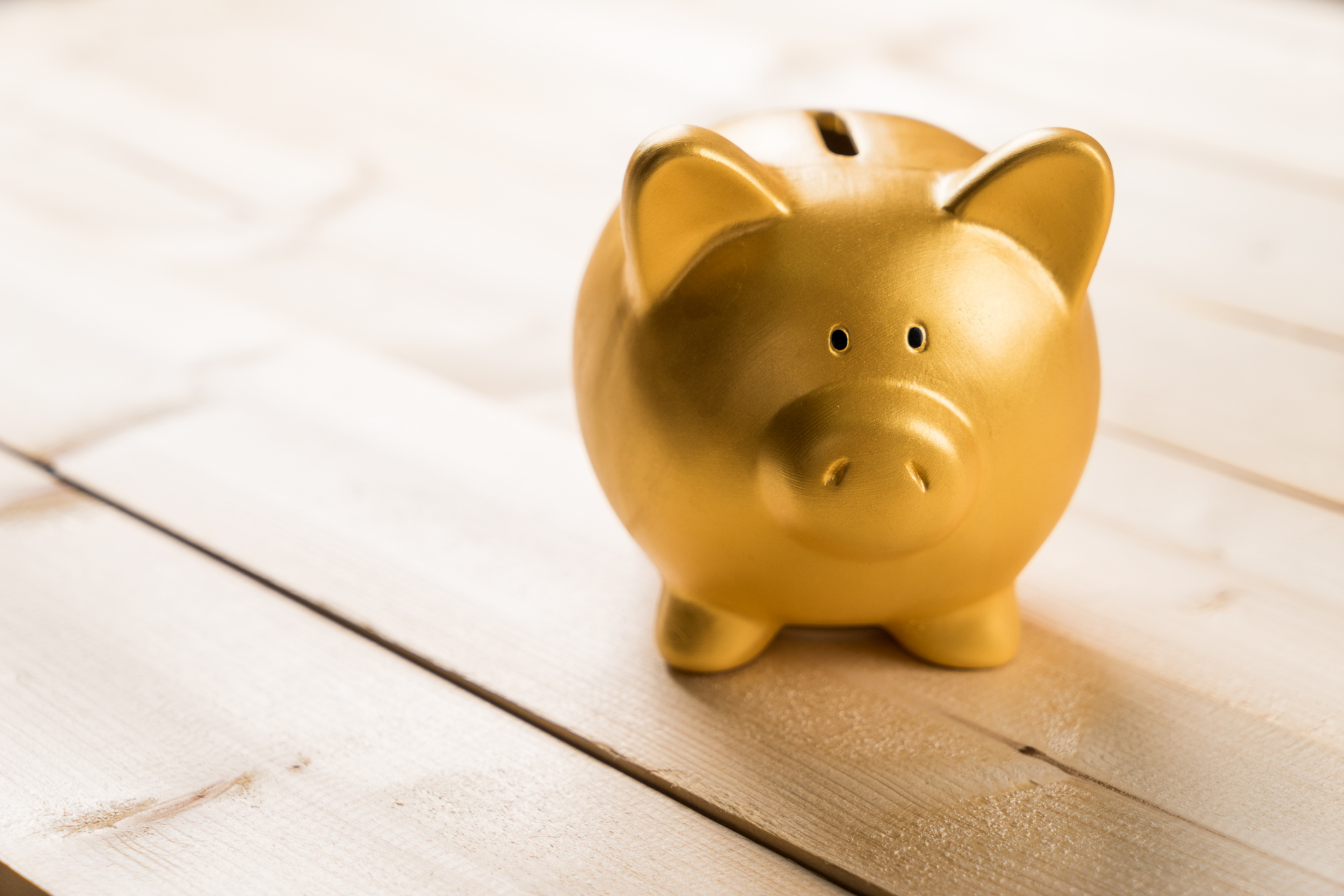Should You Buy Gold as It Tops $4,000? Here's What the Experts Say
Rate cuts, a weak dollar and macro uncertainty have helped create a "perfect storm" for gold this year. Should investors add exposure, or is it too late to buy?


Gold has been one of the hottest trades of 2025. The precious metal is up more than 50% for the year to date, and on October 7, it surpassed the psychologically significant $4,000 mark for the first time.
This rally has come as investors have poured billions into gold exchange-traded funds. According to the World Gold Council, U.S.-listed gold ETFs saw inflows of $32.7 billion through late September, while inflows into global gold ETFs topped $57 billion.
This has global assets for gold exchange-traded funds nearing half a trillion dollars, "a milestone that would highlight their role in one of the most dramatic rallies in the metal's history," writes Sumit Roy, senior ETF analyst for ETF.com.
From just $107.88 $24.99 for Kiplinger Personal Finance
Become a smarter, better informed investor. Subscribe from just $107.88 $24.99, plus get up to 4 Special Issues

Sign up for Kiplinger’s Free Newsletters
Profit and prosper with the best of expert advice on investing, taxes, retirement, personal finance and more - straight to your e-mail.
Profit and prosper with the best of expert advice - straight to your e-mail.
"Gold's run toward $4,000 has been driven by a perfect storm — falling real yields, a softening dollar, relentless central bank buying, and global unease that never seems to fade," says Dean Lyulkin, founder of registered investment adviser The Dean's List and CEO of Cardiff, a California-based small business lender.
Amid this red-hot run, many investors might be wondering if it's too late to buy gold … or if now's the right time to strike.
Does gold have more room to run?
That depends, says Lyulkin, on whether "the four horsemen" — falling real yields, global central bank purchases, a weakening U.S. dollar and macro uncertainty — "have real staying power."
He calls the cooler greenback a "real but temporary" tailwind for dollar-denominated gold, but adds that "the U.S. still runs the world's deepest markets and remains the reserve currency of choice."
Roukaya Ibrahim, chief strategist of Commodity & Energy Strategy at BCA Research, says gold's outperformance "likely hinges on whether inflows into gold ETFs continue to accelerate. In the past decade, gold's performance relative to the S&P 500 moved in step with changes in gold ETF holdings."
Douglas Beath, global investment strategist, and Mason Mendez, investment strategy analyst at Wells Fargo Investment Institute, recently raised their year-end gold targets for both 2025 and 2026 based on their expectations for lower interest rates.
"Fed easing combined with still elevated inflation indicates lower short-term real rates, which historically has been bullish for gold prices," the strategists say. "In addition, we lowered our 2025 and 2026 year-end targets for the U.S. dollar, another positive factor for gold prices."
Should investors buy gold?
"Hold some gold, but don't chase it," says Lyulkin. "The easy money's been made. Gold did its job protecting portfolios when the world looked uncertain; it doesn't need to be your growth engine now."
In the long term, investors should remember that gold has underperformed the broader market.
"From 1984 through 2024, the S&P 500, with dividends reinvested, returned an annualized 11.6% before inflation. Adjusted for inflation, the market's annualized total return came to 8.6%," writes Kiplinger contributor Dan Burrows in his feature "Is Investing In Gold Worth It? How Gold Prices Have Changed."
Gold, over that same time frame, generated an annualized return of 4.3% before inflation — and a measly 1.5% when adjusted for inflation.
"It's insurance, not alpha," says Lyulkin. He recommends that investors allocate 5% to 10% of their portfolios to the precious metal.
As for when to buy, Adam Turnquist, chief technical strategist for LPL Financial, recommends "adding exposure on weakness, given the degree of overbought conditions."
Investors looking to gain exposure to gold have several options. If you want to purchase physical bullion, you can buy gold bars at Costco.
But, as Kiplinger contributor Tony Dong notes in his feature "The Cheapest Gold ETFs to Buy Now," once you buy a gold bar or coin, you now have to decide where to store it.
"A safe deposit box at a bank comes with annual fees and counterparty risk. Self-storage in a home safe can work but adds personal security risk," Dong writes.
Selling it comes with its own set of hassles. As such, gold ETFs provide "the simplest and most accessible option" for investors to add gold exposure to a portfolio.
Related content
Profit and prosper with the best of Kiplinger's advice on investing, taxes, retirement, personal finance and much more. Delivered daily. Enter your email in the box and click Sign Me Up.

With over a decade of experience writing about the stock market, Karee Venema is the senior investing editor at Kiplinger.com. She joined the publication in April 2021 after 10 years of working as an investing writer and columnist at a local investment research firm. In her previous role, Karee focused primarily on options trading, as well as technical, fundamental and sentiment analysis.
-
 December Fed Meeting: Live Updates and Commentary
December Fed Meeting: Live Updates and CommentaryThe December Fed meeting is one of the last key economic events of 2025, with Wall Street closely watching what Chair Powell & Co. will do about interest rates.
-
 This Is Why Investors Shouldn't Romanticize Bitcoin
This Is Why Investors Shouldn't Romanticize BitcoinInvestors should treat bitcoin as the high-risk asset it is. A look at the data indicates a small portfolio allocation for most investors would be the safest.
-
 I'm a Federal Benefits Pro: I Answer These 2 Questions a Lot
I'm a Federal Benefits Pro: I Answer These 2 Questions a LotMany federal employees ask about rolling a TSP into an IRA and parsing options for survivor benefits, both especially critical topics.
-
 December Fed Meeting: Live Updates and Commentary
December Fed Meeting: Live Updates and CommentaryThe December Fed meeting is one of the last key economic events of 2025, with Wall Street closely watching what Chair Powell & Co. will do about interest rates.
-
 Why Investors Shouldn't Romanticize Bitcoin, From a Financial Planner
Why Investors Shouldn't Romanticize Bitcoin, From a Financial PlannerInvestors should treat bitcoin as the high-risk asset it is. A look at the data indicates a small portfolio allocation for most investors would be the safest.
-
 I'm a Financial Pro Focused on Federal Benefits: These Are the 2 Questions I Answer a Lot
I'm a Financial Pro Focused on Federal Benefits: These Are the 2 Questions I Answer a LotMany federal employees ask about rolling a TSP into an IRA and parsing options for survivor benefits, both especially critical topics.
-
 Private Credit Can Be a Resilient Income Strategy for a Volatile Market: A Guide for Financial Advisers
Private Credit Can Be a Resilient Income Strategy for a Volatile Market: A Guide for Financial AdvisersAdvisers are increasingly turning to private credit such as asset-based and real estate lending for elevated yields and protection backed by tangible assets.
-
 5 RMD Mistakes That Could Cost You Big-Time: Even Seasoned Retirees Slip Up
5 RMD Mistakes That Could Cost You Big-Time: Even Seasoned Retirees Slip UpThe five biggest RMD mistakes retirees make show that tax-smart retirement planning should start well before you hit the age your first RMD is due.
-
 I'm a Wealth Adviser: My 4 Guiding Principles Could Help You Plan for Retirement Whether You Have $10,000 or $10 Million
I'm a Wealth Adviser: My 4 Guiding Principles Could Help You Plan for Retirement Whether You Have $10,000 or $10 MillionRegardless of your net worth, you deserve a detailed retirement plan backed by a solid understanding of your finances.
-
 A Retirement Triple Play: These 3 Tax Breaks Could Lower Your 2026 Bill
A Retirement Triple Play: These 3 Tax Breaks Could Lower Your 2026 BillGood news for older taxpayers: Standard deductions are higher, there's a temporary 'bonus deduction' for older folks, and income thresholds have been raised.
-
 If You're Retired or Soon-to-Be Retired, You Won't Want to Miss Out on These 3 OBBB Tax Breaks
If You're Retired or Soon-to-Be Retired, You Won't Want to Miss Out on These 3 OBBB Tax BreaksThe OBBB offers some tax advantages that are particularly beneficial for retirees and near-retirees. But they're available for only a limited time.